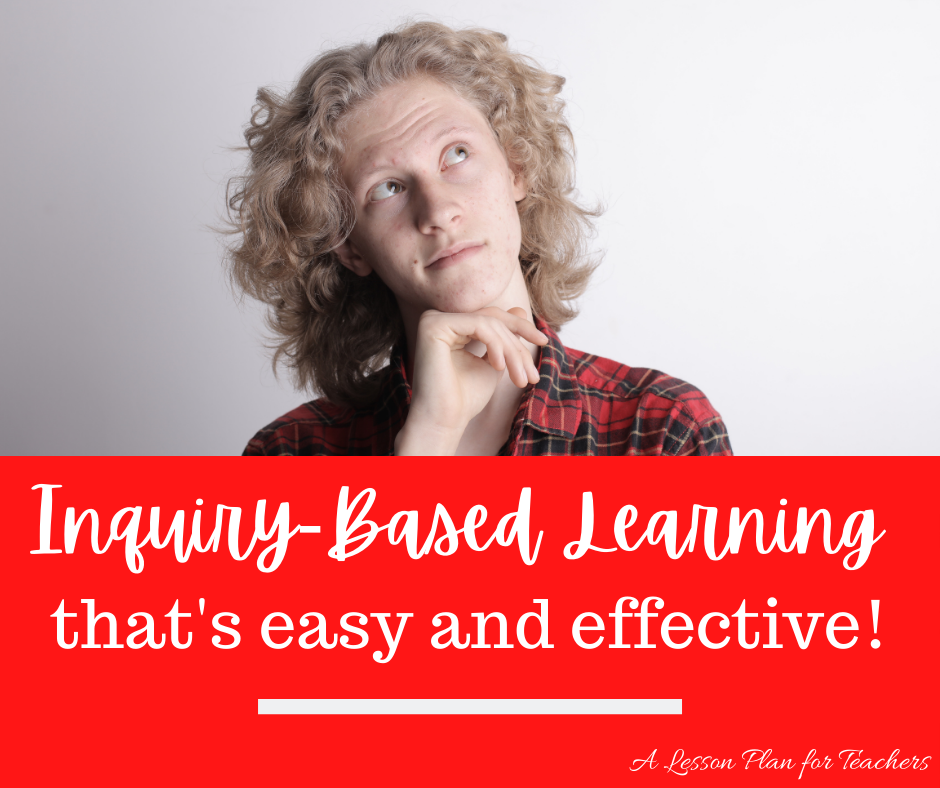Inquiry-based learning is really not anything new. It’s definitely not something that teachers need to fear or stress over as they develop lessons to meet the new standards. Inquiry-based learning has been around for a while, under different names and formats. Essentially, inquiry-based learning combines the strategy of spiral-based questioning coupled with student-centered and project-based learning. Let’s learn how to do it with five easy steps.

Step 1: Identifying Your Topic
This is easy! What do you want to teach? Do you want to put an entire unit in the hands of students for inquiry-based learning? Or, do you want to break down the unit into smaller subtopics that students can investigate to take their learning to the next level? If you want to stay on a more direct path toward attaining your standards, use topics that hit the keywords provided by your state documents. In my classes, I preferred to allow students to choose subtopics. This not only enhanced my lessons but also brought greater student engagement along with a greater depth of learning.
So, it’s your choice: let your topic be the Civil Rights Movement, or break it into Sit-ins, Boycotts, and Freedom Rides (and the list could go on and on…).
Do what works for you and your students.
Step 2: Transitioning to Inquiry-Based Learning Model
In the old days, we called this spiral questioning. You start with a question, your students come up with more questions, and the brainstorming commences on the board. Sometimes, you have students go to the board. Other times, you create a web or Venn diagram or whatever organizer best suits the topic and your students. In simplest terms, it’s a brainstorming session. However, with the inquiry-based format, it’s now best practice to have your students ask questions rather than formulate answers.
So, how do you do that? You ask them. Put it in the simplest of terms. If you wanted to know more about the Cold War, what would you ask?
Instead of a web, create a list of possible questions. From those, have students determine priority or significance of the questions to focus their learning in the best possible direction.
Step 3: Breaking Down the Inquiry-Based Learning Model Question
In some respects, this is going to be an easy step because your students have already created the smaller questions that will go along with the bigger question. Teach them to ask the small questions so they will seek greater depth in their answers. Don’t let them overthink it. We are not looking for the cure to cancer; we’re asking why scientists went along with developing a weapon of mass destruction in creating the atomic bomb. It’s more of a curiosity. That’s history. The why.
When you get to the point of having your students complete these tasks on their own, guide them with specific requirements as far as number of questions, question starter prompts, and possibly keywords they should address.
Step 4: Research
If you look up inquiry in the dictionary, one of the synonyms is likely to be the word ‘research.’ Inquiry, meaning to ask questions to know more on a topic, is simply that. In this stage of your lesson, students take their questions and answer them. Teach them the process well and they will be able to take any topic and break it down in this format.
Teach them to look at the source. Who is saying what matters, especially in Social Studies. To me, this step is not about teaching students the research process as much as it is teaching them to discern good from bad information. Then, there are all of the other obvious skills that we can teach within this section, such as citing your sources, plagiarism vs. original work, and basic technology use.
Step 5: Wrapping up the Lesson
This sounds like it’s the end of the lesson. Your students do the research, somehow they present the information, you assign them a grade, and we move on. That’s the problem. Inquiry-based learning should not have an end goal. Like so many other things we teach in Social Studies, it is a skill that should be ongoing and practiced at every opportunity. In a traditional inquiry-based learning lesson (IBL), you will wrap up with a student-centered project or presentation that allows students to show you what they not only know, but understand.
However, you still have to do the work to bring the whole class up to speed on the topics assigned. There must be whole-class wrap-ups. There must be lessons that align with the inquiry lessons. Everyone has to end up on the same page in content understanding, not in perspective or opinion.
So, how do we do that?
- Let the student presentations, performances, and products be full-length demonstrations in themselves.
- Facilitate a class discussion where you hand each student the microphone to wrap-up their individual lesson.
- Teach an interactive lecture where students insert their information or product to your existing lesson.
Or, make it big. Make this those lessons that either extend throughout the school year for an end-of-year cumulative project or make this an opportunity for students to shine throughout the year by presenting their information in larger formats. Think Renaissance Fair. Think mock protests. Think 1960s poetry slams.

Using the inquiry-based learning model doesn’t have to be intimidating or overwhelming. Instead, blanket these practices into everyday lessons. By using ready-made resources like the ones below, you can easily teach inquiry-based lessons with student engagement, interaction, and retention.
Inquiry-Based Learning Lessons for History Classes
Inquiry-Based Learning Lessons for Geography Classes
Happy Teaching!
